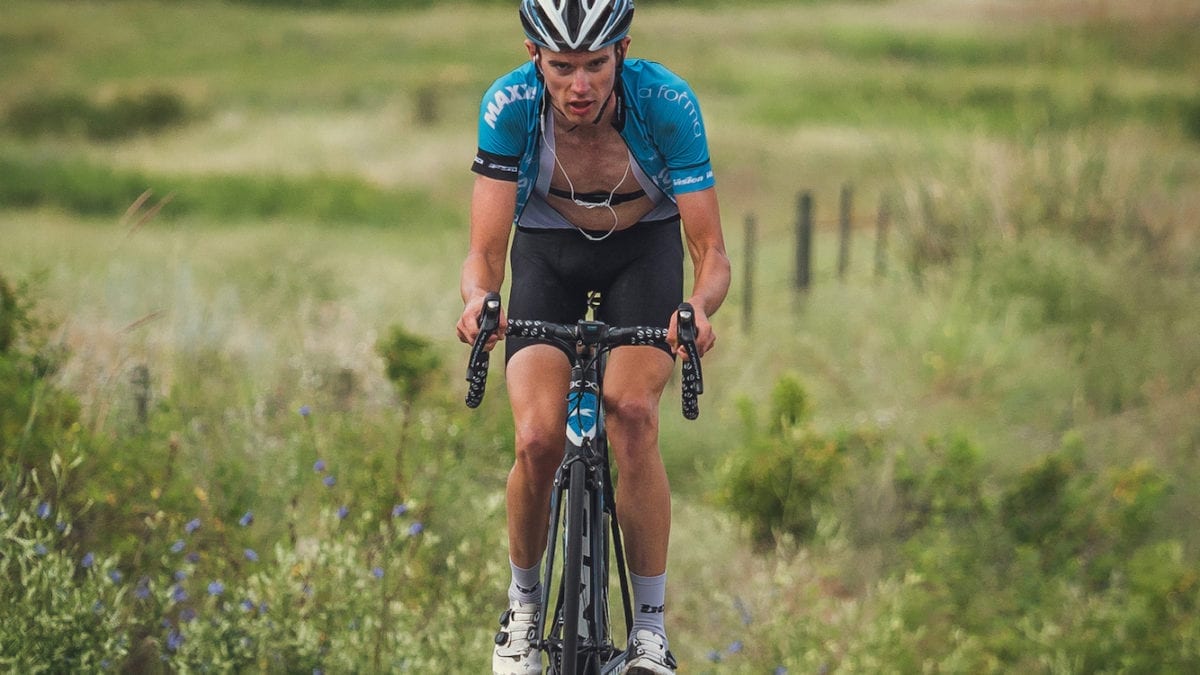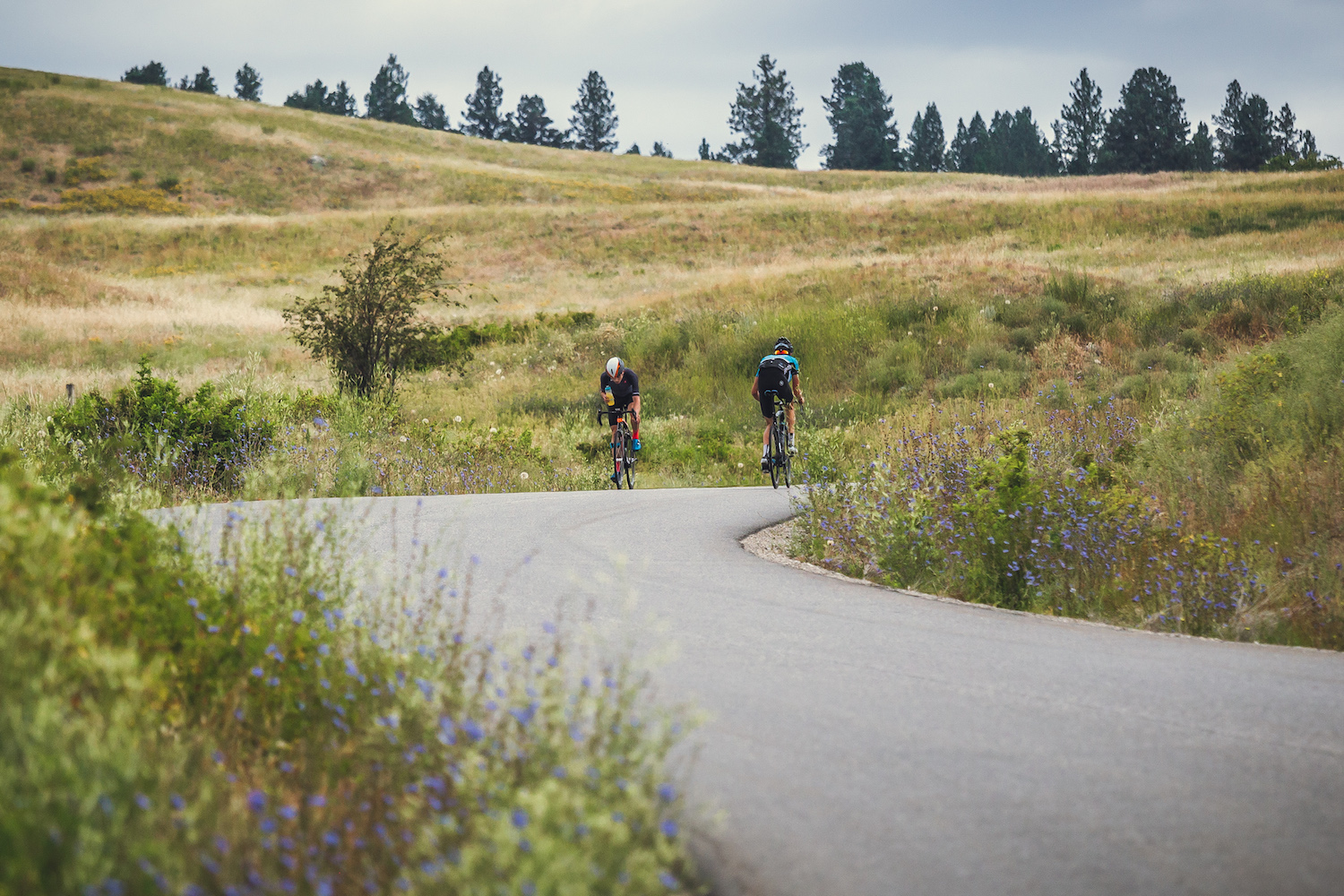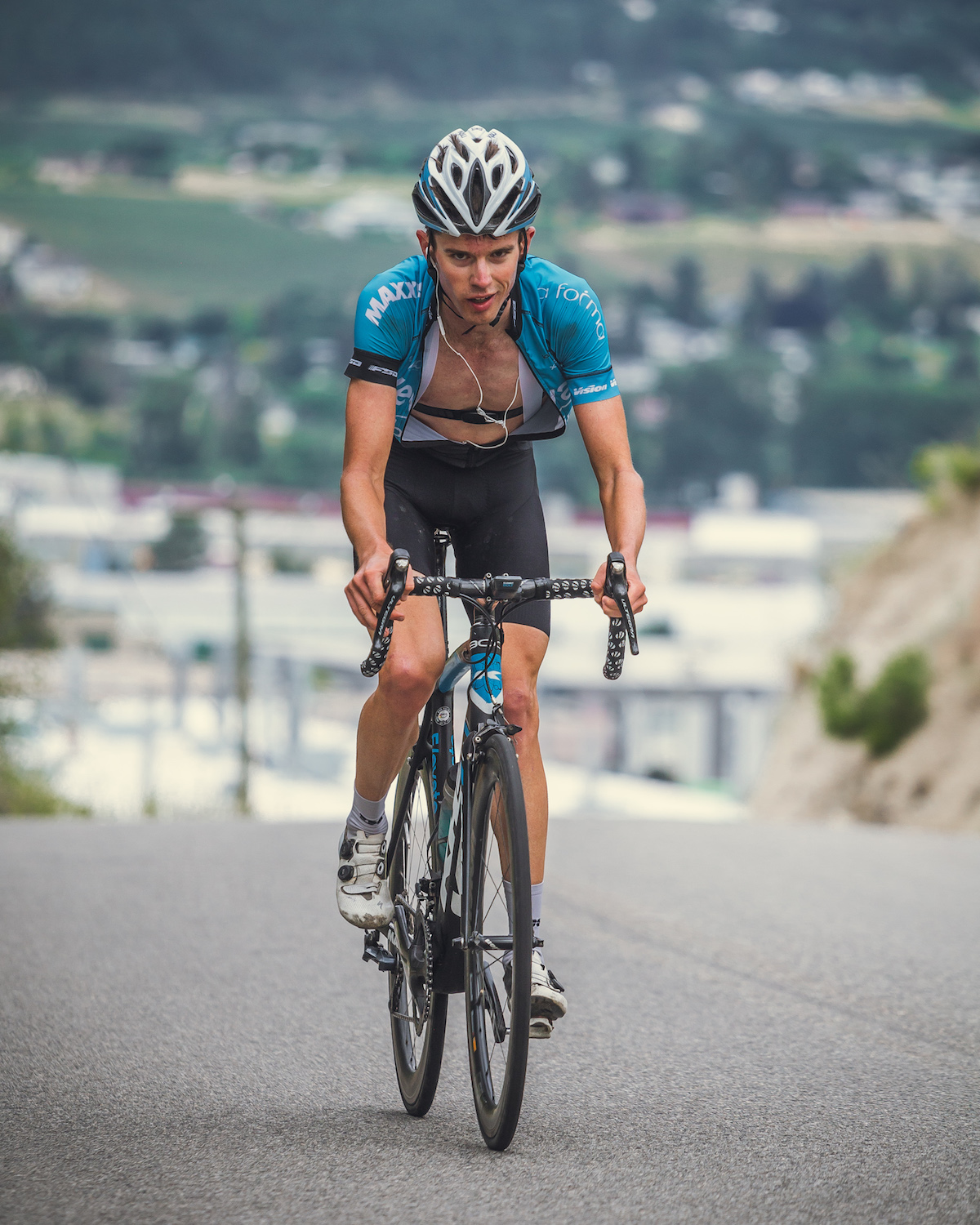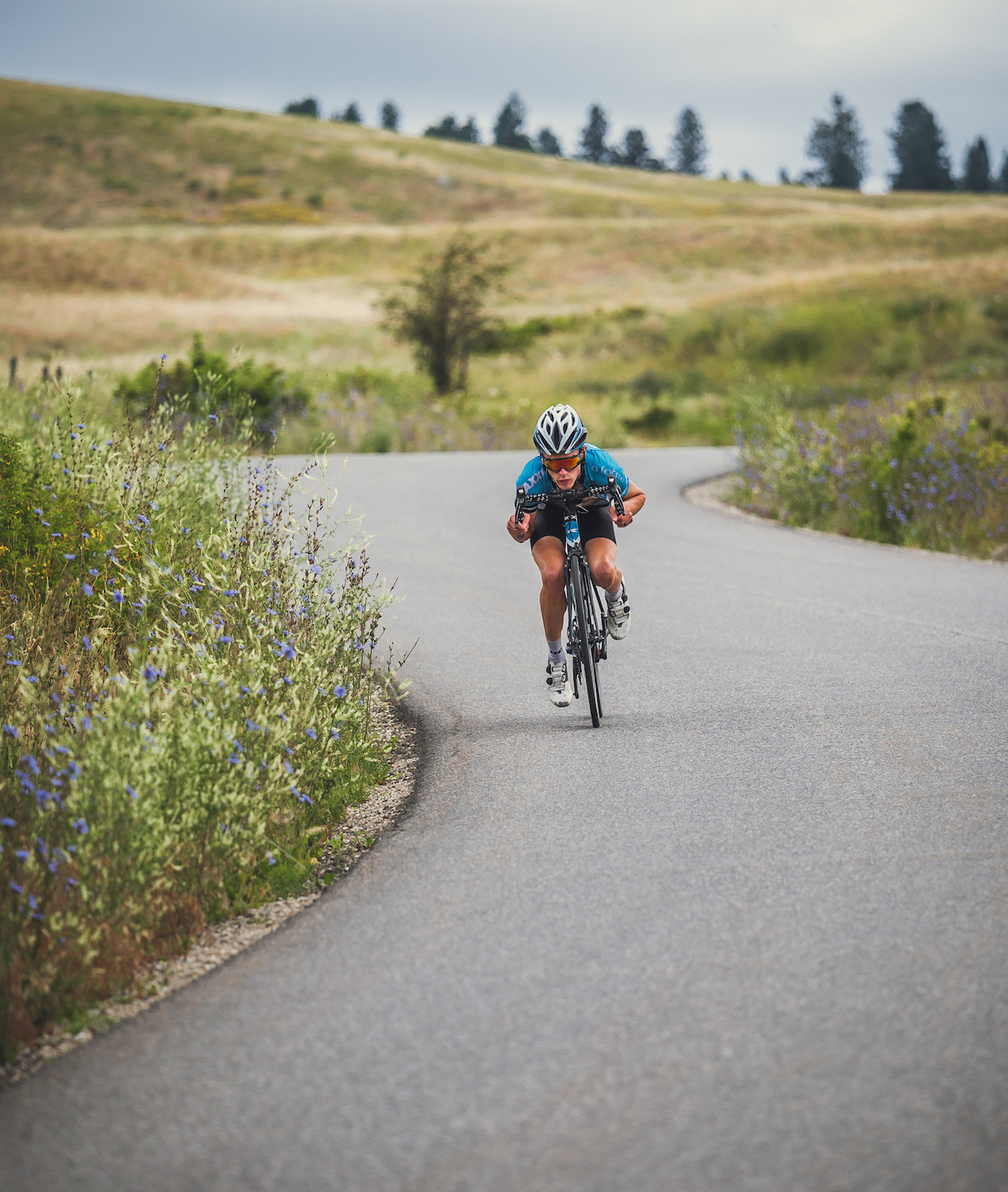The secrets to a successful Everest: Tips from from the Canadian record holder
Jordan Cheyne currently has the 6th fastest Everesting time in the world
 Photo by:
Deon Nel Photography
Photo by:
Deon Nel Photography
On July 19, one of the first truly hot days this year in Kelowna, B.C., Jordan Cheyne took on the summer’s most popular cycling trend and set a new Canadian Everesting record. The 28-year-old, who races for Elevate – Webiplex Pro Cycling, climbed Beaver Lake Road 57 times, hitting 8,848m of elevation in just 8 hours and 12 minutes.
Cheyne had actually joined the previous record holder, Jacob Rubuliak, for a few laps when he completed his 9 hour and 33 minutes Everest. “The funny thing is, it was not really on my radar to do it,” he says. He and Braden Kersey, an 18-year-old cyclists Cheyne coaches, rode out to see Rubuliak Everest. “I saw Jacob do it, saw the state he was in, and I said ‘I do not want to do that’,” says Cheyne. “Braden saw it and got a completely different impression.”
Kersey convinced a hesitant Cheyne to Everest with him.“I thought, ‘maybe I should get it out of my system’,” says Cheyne. They realized they wouldn’t have much time to prep, as the weather in Kelowna was heating up.
Cheyne came up with a plan, which worked out almost perfectly. His time of 8 hours and 12 minutes is currently the fastest in Canada, followed closely by Kersey’s 8 hours and 58 minutes in second. Here are strategies Cheyne used that got him the Canadian record and sixth fastest Eversting time in the world.

1. Pick a good climb and a good gradient
This one seems obvious but there are nuances to choosing your climb. Cheyne’s climb was 9.5 per cent average gradient, but all the sub eight hour Everests are closer to 11 per cent or higher gradients. Ronan McLaughlin, the current world record holder with a time of 7 hours and 4 minutes, rode a gradient of 14 per cent.
“Gradient is the biggest part if you want to do this fast,” says Cheyne. “You want as steep as possible, because every watt you spend going forward instead of up is a watt wasted.” He suggests looking for a climb with a 10-11 per cent gradient (if you’re able to climb that below threshold).

In terms of B.C. roads Cheyne thinks there aren’t many that would have worked better for Everesting, though he suspects that if someone breaks his record it will be in Quebec, “They have some roads that are 15 per cent for a kilometre.”
Distance-wise, longer roads are better, as they require fewer turns. Traffic is also a factor, “ You don’t want a sketchy winding descent,” says Cheyne. Although the descent on Beaver Lake Road wasn’t technical, “we did ours on a Sunday and that road leads to a campsite, so there was a lot of traffic. If you can, I would do it mid-week.”
2. Do some practice runs and plan within your ability
Cheyne wasn’t able to do much practice running up to his Everest because a heatwave was about to hit the area (“we realized it was now or never,” he says). However, he had done a number of longer rides this summer. “Doing 300kms, and a 250km ride with 4,000 metres of elevation—I learned a lot about nutrition that way,” says Cheyne. In a normal season his races are much shorter so having the experience with longer rides helped him understand how his body would behave.
When taking on a massive ride like an Everest, there’s a difference between putting down your best possible time and a solid time, says Cheyne, and you should figure out beforehand which you plan to do. He also says it’s important to be realistic about the climb you choose, “go with something that matches your fitness level,” he says, “and don’t forget to test your gearing beforehand.”
If you’re Everesting in the summer, Cheyne says planning to go a bit faster when it’s not so hot in the morning is a good idea, but it’s important to keep your speed within reason, and think about your pace throughout the ride. “You don’t want to be too close to threshold,” he says. He was going at around 85-90 per cent of threshold, because otherwise, “you’re gonna burn through all your sugars if you go too fast out the gate. You can’t catch up on your nutrition if you’re just burning glucose the whole time. There’s a fine balance there—I know from experience what I can do as an average power for a long time.” If you haven’t tried doing repetitive just-below-threshold efforts before, Cheyne says it would be worth doing a ride to lock in on a pace you can do over and over again.
3. Liquids, nutrition and the importance of a feed station
Cheyne estimates he went through about 25 bottles of water either drinking or pouring over his head. “Liquids are very important—I didn’t lose a single pound [Eversting],” he says. “You can take advantage of passing the same point every 10 minutes.”
A support station with family, friends or teammates was very important, as was ice to cool off bottles on a hot day.

As for nutrition, “My plan went out the window fairly early on,” says Cheyne. “I planned to eat 350-400 calories an hour throughout, which is the most I can absorb. I was going to have a Lara bar every 45 minutes and supplement with Cliff blocks—that worked a bit for the first few hours, but once it got hot I could only take gels, liquid calories drink mix or flat Coke. That’s partially from the heat, but also the effort level required to just to keep going makes it hard to eat.”
Planning the point at which to eat is also important. Cheyne tried to do most of his eating during the three flatter portions of the climb. Occasionally he would also take a moment at the top to get some nutrition. Although the descent was fairly straightforward, it would have been difficult to eat, stay aero and be attentive for cars.
4. Expect a mid-ride slump
“When I was at 5,000-7,000 metres of elevation I just kept thinking ‘will this ever end?’—in the middle it’s really tough, mentally,” says Cheyne.
For the first three to four hours he was pushing the pace, but, “I think everybody knows at a certain point you’ll slow down,” he says. “ I was looking at power and time at first but when it got tough I switched to a screen that was just elevation.”
“Telling yourself, ‘I’ve done 31 laps, only 26 to go!’ isn’t very reassuring. If I started looking at lap times when I was suffering I knew I would get frustrated because I knew it was getting slower, I just tried to keep it up near 300 watts and just get through it. I listened to podcasts—you can’t be hyped the whole time listening to gangster rap.”

Periodically at the top of the climb Cheyne would take 10-30 seconds to put both feet down, stretch, eat and take a deep breath. “Mentally and physically that gave my body a chance to reset,” he says. “I could do three-lap sets that way, and look forward to the break. Otherwise there’s no escape—you think descents would be a nice break but they aren’t really, especially when you’re watching for cars.”
6. Recover hard
“It’s gonna suck afterwards,” says Cheyne. “Everything hurt the half hour after I finished. Everything was seized, I had cramping and a headache. I wasn’t able to eat much that night.” He woke up at 6 a.m. and was craving salt so much that he made himself a hamburger. “I needed that salt,” he says. “You’re gonna sweat way more than you would on any other ride and you won’t get all those minerals back.”
“I was just eating like crazy the next day. There was no easy ride the next day, I just lied around, made the pullout sofa into a bed and watched tv all day. I told Braden this is the perfect time for mid-season break.”
Cheyne thinks cyclists can sometimes overthink recovery, “when you do something that big you have to respect the calories you burned and the energy you used,” he says. “It’s not like you can replace that with a recovery shake.”
7. Plan for your next Everest
Cheyne says he wouldn’t have done much differently. Going into it, he was confident he could break the record on the segment he chose, but if he hadn’t been as optimistic he says he would’ve maybe been more locked in on efficiency. “It would’ve been nice to plan ahead for a year or a few months at least,” he says, but this season hasn’t been built around long-term plans.
“Overall it was more of an engaging challenge than I expected,” he says. “There was the pacing, there was the nutrition, the descent—all that stuff becomes more of a thinking game, which I definitely appreciate.”

Retrospectively, he would make one small bike modification—a bit of foam on the stem. “I probably descended for more than an hour and a half total,” says Cheyne, “I ended up bruising my sternum from being in a supertuck position.”
As for his next Everest, Cheyne told his friend Deon Nel (who photographed him Everesting) that he would join him when he attempts an Everest. “It will be more relaxed but I don’t know if it’ll be any easier,” he says. As for Everesting with the goal of a faster time: “If I had an opportunity with a steeper hill, a cooler day and I had a high level of confidence I could go faster, maybe, but if all was equal I’m happy with my current time.”
